Take Back the Narrative: Reflections on #DiverseEd Conference
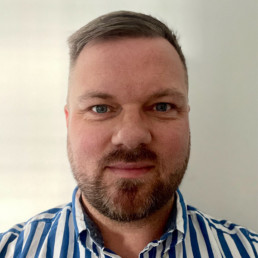
Written by David Church
David is an LGBTQ+ education consultant and former Deputy Head Teacher. He has over 10 years experience in education and is passionate about supporting schools to develop an LGBTQ+ inclusive culture and curriculum. Outside of education, David is a Regional Ambassador for It Gets Better UK.
Attending the #DiverseEd Conference in Bristol on Saturday felt perfectly timed. The backdrop of recent developments from the UK government regarding the trans community weighed heavily on my mind as I prepared for the day ahead. It seemed as if the trans community was under siege from multiple angles: teachers potentially being allowed to discriminate against trans young people in schools (https://www.thepinknews.com/2023/09/23/ehrc-guidance-trans-misgendering-pupils-schools/) and the proposed ban on trans women from women’s wards (https://www.theguardian.com/society/2023/oct/03/trans-hospital-patients-in-england-to-be-banned-from-female–and-male-only-wards).
As a cisgender gay man who had previously faced adversity under the infamous Section 28 (and the legacy since), I felt a deep empathy for the trans community, witnessing their increasing vulnerability and the reported surge in hate crimes against them (https://www.gov.uk/government/statistics/hate-crime-england-and-wales-2022-to-2023/hate-crime-england-and-wales-2022-to-2023).
As an LGBTQ+ education consultant, I was acutely aware that action was needed to ensure the safety of trans+ children, young people, and staff in schools. Fortunately, the conference offered a range of sessions on just this, highlighting the need for greater trans inclusion & diversity.
Every session I attended resonated with me on both a personal and professional level, but my mind was consumed with the urgent need to address the ongoing challenges faced by the trans community.
The first workshop I attended was led by Sarah Bonnell School, focusing on social justice in schools and empowering students to enact change within their communities. Their discussion of “cold anger” as a catalyst for change struck a chord with me (https://www.psychologytoday.com/gb/blog/brave-talk/202109/4-types-anger-everyone-should-know-about). This anger, when harnessed, could drive the transformation needed to combat the prevailing discourse around trans inclusion.
Equally, Shaun Dellenty’s keynote, highlighted the importance of challenging the narrative of fear and division, emphasising that we are stronger together, whether or not we identify as trans. The theme that stuck in my mind: How do we channel this anger and negative energy into positive action?
Similarly, in Bennie Kara’s keynote, the power of stories to reshape narratives was explored. She discussed how we need to move beyond viewing the trans community as victims or dangerous (a perception which has continuously been fed by media and entertainment). The history of LGBTQ+ rights is full of unsung heroes such as Marsha P. Johnson and Sylvia Rivera, who spearheaded the original Stonewall uprising. Yet, their stories are often overlooked in the narrative of our school curricula.
It is imperative that we teach about these individuals to reframe the narrative and challenge prejudices and biases. This will foster a more respectful society, one that goes beyond mere tolerance to genuine acceptance of every individual, regardless of their identity.
Jo Brassington, in their session on trans and non-binary inclusion in schools, passionately reminded us that silence and indifference regarding trans+ inclusion make us complicit. It reminded me of the words of David Morrison, Chief of Army in the Australian Army, which echo this sentiment: “The standard you walk past is the standard you accept.”
This is not about understanding what it means to be trans but about having compassion and acceptance for every trans person; knowing them as individuals and hearing their story. Stories have been central to human culture since time began, and it is now time to reshape these stories in the public eye. As agents of change, we must stand with the trans community, working towards a compassionate view that acknowledges them as individuals.
The #DiverseEd Conference offered a glimpse into the power of collective action, empathy, and storytelling to take back the narrative, ensuring that the voices and experiences of the trans community are heard, respected, and valued. We, as educators, have a unique opportunity to lead this transformation, shaping a more inclusive and compassionate society by ensuring our curriculum fosters a positive narrative of a range of trans people; from the books we read, to the significant role models we explore and the policies we have in place. Taking back the narrative is not just a goal; it’s a collective responsibility that we must all be conscious about in our schools.
Supporting Parental Engagement for EAL Students
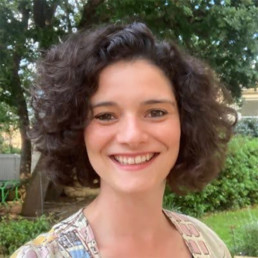
Written by Emma Sheppard
Emma founded The MTPT Project, the UK's charity for parent teachers, in 2016 when on maternity leave with her first child. She has 12 years experience as an English teacher, Lead Practitioner and ITT Lead, and now runs The MTPT Project full time.
I’m now into my third year of immigrant living, having relocated to France with my family in 2021, and – amongst all the other rather enormous changes – one of the most insightful experiences has been navigating the French education system with two children now in infant and primary school.
For context, our move to France marked the first time in twelve years that I hadn’t started September as a teacher. As a consequence, it was also the first time as a mother that I had been responsible for all the school runs, dropping my children off at their class, rather than breakfast club or handing over from an after school nanny. My children are bilingual, thanks to my French husband, and my French is competent, but – oh my! – have I felt the panicked feeling of perpetual confusion, catch up and miscommunication over the last two years!
Of course, having previously worked in schools with a high percentage of EAL, bilingual and multi-lingual students, and even managed our EAL department, it has been fascinating to be on the “other side”. But this insight has pertained, not to my children’s experience (indeed, my daughter is arguably more comfortable in French than in English), but to how we can support the parents in our communities who may not be fluent English.
Here’s what’s been really helpful for me, as the “F(French)AL” parent at the school gate…
Information Evenings
A short information evening early on in the term where parents get the chance to see their children’s classroom, leaf through their books, visually take in which book is the planner, which is for reading, what homework might look like etc., is a great starting point. It provides the opportunity for parents to demonstrate their level of English, and for teachers to take note of any families that might need additional support in clarity of communication. It also introduces parents to each other so that families speaking the same language can find each other and build community, or get added to the class WhatsApp group so they don’t miss out on important reminders or get togethers.
I make a point of speaking up at these meetings, and talking to the teacher afterwards so that they can really hear the extent of my clumsiness in French, but some parents might not feel comfortable doing this. Quietly engaging with parents as they come in, or leave the meeting with more than a “hello”, “good bye” can be a good way for teachers to get a better idea of how much English our families have.
Asking all parents in these meetings, their preferred means of communication – email, telephone, in-person, notes in planners – is a sensible way to secure clarity of communication from the start. Some parents may be able to speak and understand English confidently, but their literacy skills may be weaker. Some parents may be adept at using Google translate and balk at telephone conversations. Equally, for our native or fluent English speakers, email may be far preferable in a busy working day, to the interruption of a telephone call.
At the School Gate
The relaxed, conversational moments at the school gate are a great opportunity to show with smiles and gestures that students have had a great day, or to point out an important piece of information in a letter going home, or even to tackle challenges. This might be normal practice at primary level, but is particularly helpful for parents without much English who may otherwise have no means of knowing how school is going.
The hovering time afforded to me by the physical presence of teaching and support staff at the gate of my children’s first school meant that I was able to get to grips with how school lunches worked, wraparound care, strike days, when to bring in packed lunches, what on earth the system of cover teachers was in France. Remember that different countries have hugely different approaches to all aspects of education, and ways of doing things outside the classroom might be completely alien to some of our families – they were to me!
At secondary level, it might be trickier, especially beyond KS3 where students are more independent, but knowing which parents do collect their students, and swapping in a gate duty once in a while is a great opportunity for relationship building.
Inclusive Homework
Never have I had such thorough French lessons as when my son started CP, the equivalent of Year 2 when children learn to read in France. Every evening, he was required to read through syllables and increasingly complex passages from his Taoki text book. My pronunciation, vocabulary and understanding of French linguistics improved immeasurably over this year, even if I still can’t differentiate between the different ‘oo’ sounds. I now have two miniature teachers, as well as the shadow of their teachers to support my progress in French.
Homework activities – and resourcing these effectively – that allow parents to learn alongside their children, even if they are doing this surreptitiously rather than pro-actively, are a great way to boost parents’ own language skills.
Celebrate Home Languages
Yes, yes, I’m an English teacher and will leap at any chance to read a story and perform in front of an audience, but the jokes from parents and teachers about helping them to improve their English have resulted in a termly story-time slot for three year groups in my children’s current school.
As English speakers, we’re in the privileged position of speaking the global language of business, and as such, English is a valued language in most countries. Unfortunately though, this means that we look down – as a general culture – on other languages or consider them irrelevant.
This contempt is interlaced with prejudice, and I’ve definitely been on the receiving end of light-hearted mockery or messaging coming through my children and their friends, that indicates that these attitudes are also present in France. It creates tension, wariness and defensiveness and I’m incredibly conscious of the parents and teachers who make room for me, and are generous with my language – allowing me to make mistakes and feeding me vocabulary when I stumble – and those who look at me with fear or discomfort when I begin talking.
Story time has provided an opportunity to celebrate English – I deliver with props and songs and emphasis, and follow-up worksheets – and the children love it and share this enthusiasm with their families. Not all parents will be interested or available for a set up like this, but events like World Book Day, a Home Cultures or International Day, are great opportunities to invite primary school parents to come in and tell a story in their home language. At secondary level, this could take the form of a drop down day or afternoon where parents, students and teachers set up a national market place stall of treats, games and language challenges for students to explore.
Offering community languages as an optional GCSE is also a hugely important signal that other languages are valued in your school. Parents need to be informed of how their can support their children with this extra-curricular commitment, and the importance of speaking, reading and writing the home language. Some parents might even be interested in supporting with language clubs, additional tuition, mock paper marking, or speaking exams.
Most importantly, remember that language limitations don’t make parents lesser, and it is definitely not our role as teachers to dictate how much English our students’ parents should speak, or the languages that should be spoken at home. Bilingualism and multilingualism are a gift, and “Time and Place” bilingualism – where specific locations (e.g. home and school) – are delineated for one or other language is a tried and proven method for building native fluency in more than one language.
Parents’ English may improve over time, or they may be very content with the level of language they have. This may be particularly true if they have secondary aged children and school is the only reason they need to understand or use their English. With small adjustments – many of which are attitudinal – we can embrace the parents of our EAL students and facilitate inclusive environments where they can engage with their children’s education in a way that feels appropriate to them.
“But is it age-appropriate?”
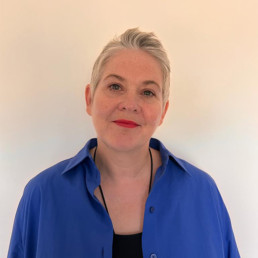
Written by Gerlinde Achenbach
Gerlinde Achenbach is a senior education consultant and former primary headteacher. Her career spans more than 35 years, with over 30 years teaching in schools. Since 2021 she has been supporting schools across the UK with Equity, Diversity & Inclusion, specifically LGBTQ+ inclusion. Her expertise is in leadership and changing school culture.
It’s now 20 years since Section 28 was repealed in England yet in primary schools we’re still, it seems, reluctant to talk with young people about being lesbian, gay, bisexual, trans or more. Some of us can’t get past the LGBT+ acronym, never actually defining what each letter stands for.
“Can I say ‘gay’ in Year 2?” one lead teacher for EDI was asked recently. We were talking during a recent 1:1 coaching session on developing best LGBT+ inclusive practice across the school. Deeply frustrated, the teacher bemoaned her experience with colleagues: “Some of them won’t include it beyond PSHE. Others never get round to it, telling me they’ve run out of time.”
Many primary class teachers are fearful of parental backlash in front of groups of other parents and their children. Some know that their senior leader colleagues are just as wary. And it’s true, this is one area where some parents and carers often feel emboldened to speak their mind. It’s embarrassing to be on the receiving end and, if you’re not confident about why we’re including LGBT+ themes in our learning and our environments, it’s easier to put your head in the sand. But let’s not forget that it’s statistically very likely that every family will have someone – parent, uncle or aunt, sibling, cousin or grandparent – who is lesbian, gay, bisexual, trans, queer or more.
“We want to make sure it’s age appropriate…”, say primary schools.
The DfE’s compulsory guidance on RSE came into force in September 2020, stating, ‘Primary schools are enabled and encouraged to cover LGBT content if they consider it appropriate to do so.’
With an independent review currently in progress to ‘advise the Secretary of State for Education on what is appropriate to teach in relationships and sex education and health education, and at what age’ , the stakes for ‘age-appropriate’ are high.
Of course, it’s important that the curriculum is appropriate for the age and experience of the children in each year group. But let’s not forget that when we talk about equity, diversity and inclusion, we’re moving beyond curriculum into the realm of whole school culture. The reservations we may have about being LGBT+ inclusive in younger year groups do not sit well with a culture of inclusivity and belonging. As a Primary Headteacher, I know that the majority of primary schools now include at least a handful of same-sex parented families, and often at least one child questioning their gender. That’s not forgetting the afore-mentioned LGBT+ relatives and friends. Surely we owe it to all the children living in LGBT+ families to see their own lived experience validated by our practice and provision? At the very least, our culture and curriculum should reflect and represent our LGBT+ children, both those who know it already and those who will know it soon enough. It’s our moral duty.
So, what could be more appropriate, for EYFS up, than talking about how families are made up differently, and that they have love for each other in common? Quite simply it is appropriate to have a curriculum where we share stories with young children about families and individuals who may dress, speak, identify or love differently from those they know, whilst talking about kindness and respect. We must also surely help children try to understand the injustice of being discriminated against, or harmed, simply for loving someone of the same gender.
We know that learning about sexual orientations other than heterosexuality does not ‘make you gay’, any more than learning that some people question the gender assigned them at birth ‘makes you trans’. Young people are discerning and knowledge is power. If any of the above applies to them, they will learn about it in a safe, accepting space. If it doesn’t apply, they have learned respect and compassion for others. Is it then morally acceptable to put our heads in the sand when we know that through educating our children, we educate our families and our communities?
Put simply, LGBT+ inclusion is about showing respect and compassion for all LGBT+ people as equal members of our diverse school and wider communities. It’s about being included in every aspect of school life and knowing you belong.
It’s always appropriate, at every age.
Woke, but not too woke?
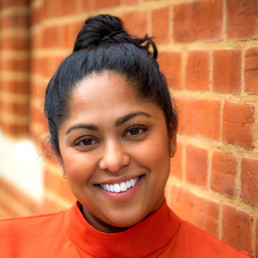
Written by Bilkis Miah
Bilkis brings a powerful perspective to the table, shaped by her upbringing as a British-Bangladeshi immigrant. With experience in both management consulting and the education sector, she offers a rare blend of expertise and cultural insight. Her unwavering commitment to breaking down barriers and challenging norms has positioned her as a powerful voice for change. Bilkis is not just a thought leader, but a driving force for positive impact, inspiring and empowering communities everywhere to re-imagine what is possible.
Inclusivity, or ‘wokeness’ as it’s come to be known, isn’t political correctness gone mad, it’s an essential move for our children.
To see how ‘wokeness’ is perceived in education, you only have to open the newspaper to see that Robert Halfon, Chair of the Education Select Committee, condemned the use of the term ‘white privilege’ last year. Halfon claimed – and this is as much as I can agree on – that there is an ‘opposite reality [to privilege] for the white working class across society’.
But surely this is a question of semantics? Isn’t it more important to make sure we’re not entering a class war, and pitting one group against another? Using terms like ‘white privilege’ isn’t the reason why so many white working-class children are failing. It’s a systemic problem, including underfunded schools, economic inequality, and the lack of opportunities for social mobility.
Understanding communities
So, what’s even more important is that we come up with initiatives and programmes that help future generations. For this to work, it’s important to listen to the community, such as teachers and parents, but also to ask children what they need. We need to understand the context that is breeding such inequalities, and let communities know that their voices are being heard. We’re all complex and layered humans, and there are nuances to navigate. For example, in Tower Hamlets where we’re based, there is a majority British-Bangladeshi and white working-class population. Things like living in an intergenerational home, or having parents who have little or no formal education are real issues that our children have to deal with. When we asked parents what they were worried about, it was the same common theme – they were worried about losing their children to a world they didn’t understand.
But there needs to be impact on beliefs and understanding the community has over these issues. It has to reach communities beyond the school gates, it can’t just be up to teachers. This is where we saw an opportunity to take parents and carers from all backgrounds on a journey to clearer awareness; one that helps communities understand what we mean by diversity and inclusion and to have the tools they need when they come across it in their lives. We do through our home activity kits. The kits encourage families and children to think and learn about themselves and the world around them through fun, paper-based activities. Importantly it doesn’t centre around having digital access – digital poverty in our community is a real obstacle – rather, the focus is on spending quality bonding time away from the screen through activities like journaling, reading and art to name but a few.
Real-world wokeness
Last year we saw St Paul’s Girls School renaming their ‘head girl’ position to ‘head of school’. This may seem like a superficial change, but the reasons behind it are key. And no, this isn’t ‘political correctness gone mad’. It’s really important that we don’t define our pupils by gender, race, religion, sexuality, class or ability. All the stereotypes that come with these narrow categorisations have wider societal implications. By changing the title from ‘head girl’ to ‘head of school’, staff are saying to their pupils, ‘We recognise you, and you can achieve anything regardless of your gender’. It’s not boxing girls into certain roles, or qualifying success with terms like ‘girl boss’ – you’re a boss, period. This is so important when we think about a healthy, diverse workforce for the future. Even in our pilot project, we’ve heard comments from children such as “Boys will have more important jobs as they have bigger brains.” Statements like these may seem inane, but it’s essential to dismantle them as soon as you notice them, so they don’t have the opportunity to entrench further.
Importantly, when you’re talking about making sure to teach about stereotypes at school, and embedding this into school policy, make sure to take families on the journey with you. It never ceases to amaze me how many schools don’t necessarily ask parents the tough questions: ‘What worries you?’, ‘What are your main concerns around teaching about stereotypes?’. Not only does this let families feel heard, but it allows you as the teacher to understand their concerns, and have the opportunity to allay some of those fears. More often than not, parents want the same as you – for their children to have all options open to them.
The Pen and The Community: What a football cage taught me about community
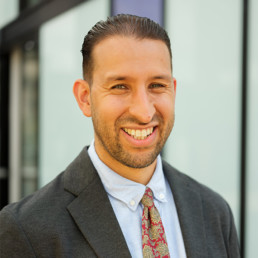
Written by Mohamed Abdallah
With almost two decades of experience, Mohamed started his journey in youth work and pupil referral units before spearheading groundbreaking inclusive practices and systems as a leader in an 'Outstanding' all-through mainstream school. Driven by a relentless commitment to positive change, Mohamed now dedicates his efforts to collaborating with school leaders across the nation as the Head of the Inclusive Leadership Course at The Difference.
“We are meaningful as individuals only through our interconnections”
Alexander and Conrad (2022)
The “success” I experienced as a youth worker, a practitioner in a Pupil Referral Unit, and as a senior leader in mainstream schools has at times been credited to me or my leadership, and that often makes me feel uneasy.
Partly because I experience imposter syndrome on a regular basis. But mostly because everything that “I have achieved” only happened through collective efforts.
It was only achievable because a community of people pooled together their desire, commitment, skills and knowledge to make a difference to the lives of children.
And this is why I don’t believe in individual heroes or saviours.
It sounds like I’m being a little contrary, but I hope that when you get to the end of this post it will be clear that what I am proposing instead is so much more liberating, freeing us from the idea that success is a purely individualistic journey. I think the opposite is true, that the collective efforts are more empowering than the individual endeavours of one.
KEY INGREDIENTS
Most of my childhood and teenage years were spent on Studley Estate in Stockwell. And to this day, that time remains one of the most significant chapters of my life. And it is the sense of community I experienced there which has become an integral part of my identity. It influenced how I grew, how I socialise, how I make decisions, and where I feel a true sense of belonging. It is also where I worked out what my skills and qualities are and helped me develop a wealth of knowledge about my community.
Throughout my life, whether as a child on Studley Estate, a youth worker in the community, or as a senior leader within schools, there are three key ingredients that formed an active and healthy community which stood out for me. These three ingredients are: DISCOVERY, COLLABORATION and ACTIVITY
Let me share their significance using a personal example from my childhood.
THE PEN
The Pen, the football cage right in the heart of our estate.
Discovery
As a child, I discovered a community of children who played regularly in the Pen and shared the same passion for football. It became our meeting point after school and on weekends, it fulfilled our need for play and socialisation through football. The discovery of the Pen and our shared love for football became our major connection.
Within our little community of talented footballers, we recognised and celebrated our differences. Some of us supported different teams (I’m a lifelong Liverpool fan), but our shared passion for football forged a bond that transcended those differences. We had an instant connection, rooted in our passion and knowledge of football and our ability to play the game.
Each of us brought something unique to the table. I play as a defender, and that was a valuable asset in a team full of players who wanted to play in attack. We recognised the unique skills and qualities that every player brought which in turn helped us create a space where everyone felt safe, where a shared passion and a common purpose thrived. We discovered our purpose, to have fun through the medium of football.
Collaboration
Looking back, reflecting on us as young children, it was incredible how well we collaborated with one another. We organised ourselves into teams, we agreed on how long a game should be, and we always accepted the result of a game without any adult involvement.
The centre of the Pen became our arena for collaboration, where we waited until everyone who wanted to play had arrived before selecting teams. It was a joint effort, facilitated by everyone present in The Pen at that moment. We recognised that each person who joined us was not only a football player but also an active agent in creating the ideal space for play.
We understood, even at a young age, that leadership could emerge from anyone, regardless of age, background, or footballing ability. We acknowledged the leadership potential within us all.
Activity
And then, we played, we mobilised our assets into collective activity.
We acted collectively in our game, where there was fairness, equity and trust. And though the game was always competitive, we always prioritised fun. Without the intervention of adults, we treated each other with mutual respect, accepting the game’s outcome and naturally resolving any conflicts that arose.
This collective activity involved every single one of us, as we recognised that to play a game of football it required the collective participation of all of us.
We discovered each other and our assets, collaborated in shaping teams, what type of game we would play, and engaged in the activity of the game in a way that was organic and purposeful.
COMMUNITY
These key ingredients can work for any community, including school communities.
Discovery is at the heart of every strong community.
It means discovering how and where people may have a sense of belonging, forming friendships, and feeling supported in their growth and development, discovering their own assets and capabilities. It’s about discovering spaces where people can come together, share their experiences, and provide a nurturing environment for children.
Opportunities to discover spiritual connection, helping people to collectively share values, wisdom, their gifts and connect to much needed resources, services, and opportunities for personal and community development.
When we foster genuine discovery which lead to connections among different groups, we create a tapestry of relationships that weaves us closer together.
Collaboration is essential for community growth and progress.
It means working together on projects, initiatives, and events that have a positive impact on people’s lives. Sharing skills, knowledge, and experiences, and creating a collective pool of wisdom and expertise. Collaborating contributes to the support of one another, exchanging ideas that work toward common goals addressing social issues to promote inclusivity, and create a sense of unity.
When we collaborate, we tap into the diverse strengths of our community and achieve outcomes that are greater than what any individual or group could accomplish alone.
Activity is about taking collective action and empowering every individual within the community to contribute to its well-being and success. It means staff, children and families being active participants in decision-making processes, having their voices heard, and realising their potential as change-makers.
They can collectively act by engaging in volunteerism, advocacy, and community-building activities alongside the local community. Acting together can foster a culture of empathy, respect, and social responsibility within school communities. And in turn promoting social justice and supporting those in need by empowering them through their assets. Most importantly a school and local community taking ownership of their community’s future.
When we act collectively, we create a sense of agency and shared responsibility, leading to a stronger, more resilient community.
BY THE COMMUNITY
To be a community member is to care, to take responsibility, to acknowledge your collective power.
To be a community member is to cultivate meaningful connection to the numerous relationships and institutions on our doorstep.
So, I want to return to where I started.
Our communities are shaped by our interactions, our relationships, and the wisdom we share with one another. When we achieve something, it is because we have worked with others, supported one another, shared resources and acted together.
And this is why I don’t believe in individual heroes, whether they are people or institutions. Because it is the collective efforts of many that is heroic. It is our collective power that creates sustainable change.
Not a single person.
It requires collective risk taking to effect change. It doesn’t happen overnight, it takes time, but it is sustainable. It is designed by the community; it is done by the community, and it is sustained by the community.
If you are curious to learn more about Drawbridge and how we can help schools foster meaningful community engagement? Feel free to reach out to me at mohamed@drawbridge.org.uk.
The Power of Networking
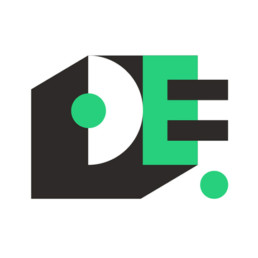
Written by DiverseEd
Diverse Educators started as a grassroots network in 2018 to create a space for a coherent and cohesive conversation about DEI. We have evolved into a training provider and event organiser for all things DEI.
#DiverseEd Table Photo
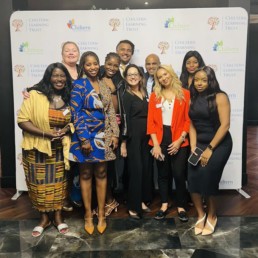
This Friday night we joined the team at Chiltern Learning Trust for their annual Racial Equity Network Dinner (#REND). We had been unable to make it the last two years running despite really wanting to attend and support it, but this year we were able to make it happen.
We sponsored a Diverse Educators’ table and invited some of our collaborative partners from the race section of our DEI DIrectory to join us on our table. It was brilliant to finally all be together in person! It is not very often we are in the same room, at the same time – the energy was palpable and we were very much the ‘naughty table’ as we needed to take advantage and connect whilst we could.
Thanks for joining the team from #DiverseEd:
- Nadine from Aspiring Heads
- Rhia from Black Teachers Connect
- Jemma from Let’s Start a Conversation Today
- Aretha and Youlande from Mindful Equity
- Louise and Marcus from MixEd
Getting to Luton for 6pm on a Friday night, at the end of a long year and a hard term, was not for the faint-hearted. Our table travelled from Manchester, Nottingham, Birmingham, Watford, London, Kent, the New Forest and Bath to attend the event. The journey to the event is very much a metaphor for the direction of travel of the work – it is non-linear, frustratingly slow and there are lots of obstacles to navigate including poor conditions and route closures.
We were delighted to be in the room where it was happening, along with 480 other attendees, who all care about and are committed to affecting change when it comes to racial equity in the education system. We had a lot of other connections and collaborative partners at the event including:
- Diana from the Academy of Women Leaders
- Frankie from BAMEed SEND
- Albert and Johnoi from Black Men Teach
- Iona and Sam from Edurio
- Daryl from Flair
- Paul and Andrea from the Institute for Educational and Social Equity
- Penny from The Linking Network
- Bukky, Flora, Yamina, Kiran and Emma from #WomenEd
In the more formal part of the event before the eating and networking started, there were a series of short presentations from a range of speakers:
- Sufian Sadiq – shared a heartfelt reflection on the fatigue and frustration of how slow the rate of change in this work is for him, his peers and his family. His call to action was for solidarity.
- Professor Paul Miller – shared the systemic data to highlight the structural and societal barriers for people of colour in our sector. His call to action was for allies to leverage their power.
- Sarah Owen MP – shared a personal narrative of being a biracial pupil and how this work could have helped her journey as a pupil but also now as a politician. Her call to action was to create greater belonging.
- Dr Patrice Evans – shared a quote from Obama and reflected on her journey being the only black woman in many spaces. Her call to action was to collect the stones and to use them to build empires.
- Hannah Wilson – shared her awareness of being a white person speaking to a room of global majority and then used the space to amplify the organisations in the room doing brilliant work in this space. Her call to action was to join the coalition.
- Assistant Professor Derron Wallace – shared a comparative lens to the data and the activity in the US compared to the UK and questioned what our collective strategy for racial equity is. His call to action was that everyone needs to own the role they have to play.
In the less formal part of the evening it was great to see, chat to and smile across the room at Alison from CCT, Mary from Myatt and Co, Tom from Ambition School Leadership, Phillippa and Sajid from PACT, David and Ena from Venturers Trust, James and Sharon from Inclusive MAT, Antonia and Bhamini from Pioneer Educational Trust, Adam from OTSA, Thahmina and Omar from CST, amongst others.
#REND is a brilliant example for the power of networking. The event was a magnet for people seeking a shared vision, a unified purpose, a collective agency. Together we are stronger, and we can go further.
Do check out the social media posts via the event hashtag #REND and put the draft date for the 2024 #REND event in your diaries: Friday 12th July. We will have a table there again and will invite new partners from our DEI Directory to join us. It would be great to see you there and they are increasing capacity to 600 for next year’s event.
DEI Directory Flyer
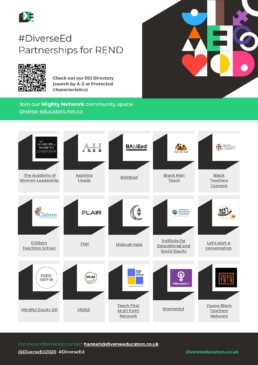
DEI in our Independent School
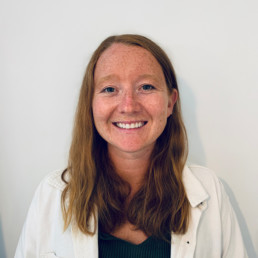
Written by Jami Edwards-Clarke
Director of D&I at Hurstpierpoint College, Housemistress and PE Teacher
Recently, we have seen change of all types firstly in the fight against a global pandemic and secondly with the Black Lives Matter movement which has brought to the forefront issues surrounding inequality around the world.
Naturally, we have all been challenged to take a deeper look into how we live our own lives, perform our jobs and even analyse our subconscious thoughts and feelings. Our school, as an independent school of excellence, is not exempt from this challenge and has therefore decided to tackle this head on with the creation of a role – the Director of Diversity and Inclusion.
As the postholder, my hope is to work closely with a team of well-informed staff members along with passionate students to bring about positive changes so that we think more critically about diversity and inclusion. Working together with both the pupil and staff platform, I hope to create opportunities for change within our academic and co-curricular programmes, ensuring that when our students leave Hurst they have a thorough awareness of issues surrounding race, gender, sexuality, ethnicity, disability, class, religion and therefore head out into the world with everything necessary to find their way.
We started this journey with the creation of staff and pupil platforms along with holding an INSET outlining our goals for moving forward. In both cases, the support from members of staff and pupils has been overwhelming and brilliant which will help to drive this movement forward with great positivity and gravitas. I feel incredibly excited and optimistic that we can and will make huge strides towards a more diverse and inclusive environment for all members of its community – staff and pupils alike.
It is important for us to remember that our school is an independent school. It sounds silly to say, but this statement leads us to consider what it is that a school is for. We can probably agree that the role of school is to educate our young people – but what does the word ‘educate’ really mean? Is it to enable young people access to the best academic outcomes, achieving the top grades at GCSE and A-level? Is it to enable young people access to the job market, ensuring that they leave school able to achieve wealth and prosperity? Or is education about more than just grades and careers? Is education about exposing young people to what it truly means to be human, in all its messiness and uncomfortable truths, in the hope that the next generation can make the world a better, more equal place?
Over recent years, our academic curriculum has been fine-tuned to ensure young people are able to achieve their full potential. This has been supplemented by co-curricular and pastoral programmes that ensure the whole child is nourished with an extremely rich diet. This is to be celebrated. Yet as academic programmes have been fine-tuned to meet the needs of the new exam specifications, what social, cultural and historical learning has been lost as a result of the formal learning programmes followed by each department?
Staff Training
In our end of year INSET session, Heads of Department were invited to reflect upon the diversity contained within their curriculum areas with their staff. The reflection was structured through a series of questions that placed the teachers into the role of the student, considering the view of the world they were left with at the end of their courses. You can see the questions below:
- You are a young person at the end of your learning journey within the department. What view of the world have you developed through our learning programmes?
- You are a young person who identifies as belonging to a minority group. What view of yourself have you developed through our learning programmes?
- What culturally diverse learning opportunities are already overtly present within our curriculum?
- What opportunities are currently being missed to engage with culturally diverse learning in our existing curriculum?
- What changes could be made to our curriculum in order to make it more culturally diverse?
While there was much to celebrate in our curriculum, it was recognised by all that there was much still to do. While equal representation of gender was an area of real strength, with a concerted effort made in typically male-dominated subject areas such as Psychology, Physics and English to better represent women, more work needs to be done to strengthen the recognition of the contribution of BAME and LGBTQ+ groups. However, many departments began to uncover some uncomfortable truths about the relationship between the learning experience within their curriculum areas and the content of the exam board specifications which they deliver.
A running theme throughout the reflection was that curriculum content determined by specification lacks diversity, particularly in studied set texts and persons of interest. This is extremely problematic for the world view our students are left with, which has become dominated by the achievements of the white, heterosexual male.
Many HoDs articulated this frustration, while also commenting on their desire to do better. In Physics, we have pledged to celebrate the contributions of more diverse Physicists. In Business and Economics, they have pledged to challenge the view that the marketplace, its workforce and consumers are there to be exploited. In the Sociology Department, the LGBTQ+ community in Brighton will continue to be celebrated for the pursuance of identity and rights issues. The Modern Foreign Languages Department has pledged to include more cultural case studies that expose our young people to issues within French and Spanish speaking countries beyond Europe.
An area of significant influence could well be sport and the arts. Perhaps articulated most beautifully by a student of Dance:
“I have learnt through the study of Dance that I do not have to identify myself with a socially constructed label in order for me to make sense to others for whom I do not represent the norm or for whom I represent a threat to their own sense of self. It is ok to simply be who I am”.
Dance student
These curriculum areas create the cultural fabric of any school and therefore will be fundamental in providing our young people with a meaningful exposure to the reality of what it means to be human. From the field, to the stage or to the art studio, each recognises its importance in developing a greater sense of awareness within our community. Each also recognises that this will require them to take a greater level of risk within performance, challenging the conventions and structures that have been embedded into the very fabric of the college throughout the course of its history and questioning its output in creative and sporting endeavours. We cannot afford to simply continue to play it safe – and nor should we.
The most important change to make is with the exam boards themselves. Therefore, the most important pledge to make of all will be for HoDs to lobby exam boards to include greater diversity within specification content. Hurst has the chance to pave the way for independent schools to join forces to challenge exam boards and also the Department for Education to develop a broad and balanced curriculum that embraces and celebrates diversity as a core principle.
While we continue to uncover some uncomfortable truths in the independent sector, it is important that we take conscious steps to embed long-lasting, meaningful change that will enable our young people to be the generation that makes a better, more equal world for us all.
The Voices of Our Staff Platform:
I believed myself to be an inclusive, liberal, accepting woman. I’d like to believe I still am, but I was, and continue to be, incredibly naive about how the world works, and the disadvantages too many people face. I was sat watching When They See Us (Netflix, true crime) and got halfway through the first episode before breaking down in tears. The reality was finally hitting me in waves, I’d sat for weeks watching the news, my anger building. The social media accounts I follow increased to include more education and understanding; the conversations with friends focused on clarifications and questions. This shouldn’t be a post about my white experiences, but merely a recognition that we all have a lot more to learn.
I want to understand, I want to empathise, I want to change and support, empower and encourage. I want to do this without being a ‘white saviour’, so I also need to learn how. How to speak about race – which I think focuses on listening – so that’s why I’m part of this group. I feel proud to be part of this strong and united group of staff and students, and am eager to see how our ideas, discussions and momentum positively affect individuals, communities and lives.
Phoebe Lewis, Psychology Teacher
The current state of the world demands that we do all that we can, as individuals and collectively, to strive for social justice and equality. I hope that the discussions and education delivered through this platform will broaden the perspective of staff and students alike and will result in real progress towards greater diversity at Hurst. Such progress will enrich and enliven the experience of everyone.
Hannah Linklater-Johnson, Head of Higher Education
I, like so many, have been affected by the BLM movement. For me the response represents more than an intellectual argument about equality and academic discussion about race issues. For me the news coverage and the videos I have watched evoke an emotional response. Initially these were all coloured by the sour taste of fear, fear stemming from the stirring up of memories that had been hidden away from public view. However, the bitter taste instilled by white supremist groups and thoughtless comments is being tempered by a gradually growing sense of hope.
For me there was no option of not being a part of the Diversity and Inclusion group at our school. I needed to be a part of the change I wanted to see happening and this gave me the platform for my voice to be heard. This group will help Hurst move towards fully embracing a culture that is stronger and healthier, with values built around core beliefs of equality, parity and fairness. Together we are working on changing behaviours, developing new ways of thinking, planning and ensuring that all parts of policy creation or decision-making are scrutinised under this new light. To quote Maudette Uzoh, this platform exists to help us ‘cultivate an environment where it’s impossible for racism of any sort to sprout or thrive’.
We are looking to develop our INSET training and our department meetings not to tick the box or create a moment to celebrate how ‘woke’ we are. Our aim is to educate ourselves, each other, our staff, our pupils, and our parents. To push forward positive change. A change we hope to see not only reflected in reducing bias, through training and awareness, but also in policy change so all processes are embedded with the expectation to always create a culture that embraces diversity and is founded on inclusivity. This means becoming a community in which any form of racism will not be overlooked, dismissed, belittled, or tolerated.
It is a sad and, perhaps, little-known truth, that victims of racism often stay silent. There is a fear of being judged, of being told once again ‘it’s only a joke’, of being told they are ‘overreacting’. There is always another way of being told that one ‘isn’t quite right’ for the job, position, role, without stating the reality of the more appalling truth. Coupled with the emotional response the victim is left knowing, logically, they are in the right, but feeling diminished, vulnerable, exposed, and frightened. It is therefore encouraging that the Diversity and Inclusion group began with members saying that this could not be tolerated, and that to allow one comment to pass unchecked, unchallenged, is to set a tone that suggests racism is acceptable. To support the victim, to stand with them as an ally is to give them the freedom of speech which has so long been denied and is empowering for the community as a whole.
On a personal level, it is this new dialogue I find most exciting. Sharing my experiences and my views, and seeing them being acted upon with sympathy, has been liberating and empowering. There is very little I will not talk about, I am known for being, perhaps, too forthright. But the terrible, overt and violent racism experienced when I was younger and the day-to-day casual racism I have learned to tolerate, is something I have hidden away. It is too painful and too damaging. I have friends and colleagues who have said to me, in the past, that they don’t know anyone affected by racism first-hand. Now, because of the Diversity and Inclusion group, this is the first time I have felt able to say, ‘but you know me.’
Sarah Watson-Saunders, English Teacher
The Voices of Our Pupil Platform
The changes I hope to see are mostly concerned with encouraging the education of pupils about race and diversity. Part of this is to do with the curriculum itself, for instance, there should be more focus in history about the atrocities of British colonisation. Not to make students ashamed of Britain, but to prevent a whitewashed pride inhibiting the desire to improve our country; and there should be more literature written by authors from ethnic minorities in English. Whilst teachers are understandably tied to the exam curriculum, I would argue that as an independent school, petitioning exam boards to diversify curriculums would have more impact than individual students doing so – this platform provides an ideal collaborative way to achieve this.
Outside of lessons, I would also hope for more encouragement for students to educate themselves on racism and how to be a better ally/activist. Many teachers currently have a ‘what I’m reading at the moment’ poster on their classroom doors. Why not expand that to include recommendations for podcasts, films and books which help educate about the experience of ethnic minorities?
Finally, education is meaningless without action. Whilst students cannot yet vote, we are able to email our MP and sign petitions. I hope to see the development of an ‘activist culture’. Students should be encouraged to email their local MP and be given the tools to do so in the most effective manner.
Saoirse, student
I joined the diversity and inclusion platform because I believe every young person must understand issues regarding diversity. There are issues that are sometimes naively neglected because the slavery of the British Empire was abolished or because America has had an African American President. But pretending that this means equality is naive and just because society is more equal than before does not mean we should settle for anything less than complete equality. We, as the next generation of leaders, must understand this if we are ever to see the end of inherent racism. We should all actively educate each other to learn about these issues, which is another reason why I joined this platform.
There’s no denying that the pupils who leave our school are statistically more likely to be successful because we’re a predominantly middle-class independent school. This makes the issue of racism something which should not be neglected because if it is then we would be doing a huge disservice to the future. I believe that the college has to ensure that diversity is a dialogue that is constantly engaged with.
I hope to see more in-class discussions that deviate from subject-based content in the national curriculum and incorporate diversity and inclusion – with teachers taking an active role in reflecting on how they can improve their lesson plans to ensure that these discussions take place; and that the content they are teaching is reflective of the equal society that we will hopefully see in the future.
It’s these changes – such as constantly educating on these issues and ensuring teachers are up-to-date with key issues – that I hope we can adopt as a college which will hopefully allow us, the pupils, to leave the college with an understanding of how an equal and inclusive society could look.
Aengus, student
I joined the Diversity Platform because I felt that, as a community, we have a long way to go in terms of challenging bigotry and making our school a safer and more accepting place for people in all minority groups. Given the extensive white privilege within our context, I think we tend to look past issues like racism because we simply don’t see it as a part of our lives. It’s on the news, social media, TV but not explicitly within our own lives. Due to this lack of experience, we stop educating our children, stop reading articles and watching shows because even though we are aware of racism, and give it a passing “it’s just so awful” when the topic arises, we don’t feel as though we have to fight against it because it has never happened to us.
For our community to begin to function in a way that is accepting and respectful of its students of colour, LGBTQ+ and female, we must begin to educate pupils on these issues and their past. The world is an unfair place and if our pupils go into it with no knowledge of how people should be treated, and the issues brought upon us by the past, then they will have a major shock – because the world isn’t like our community, you can’t just give someone a clearing or pastoral alert if they say something offensive. Often, I hear people referring to us as the ‘bubble’ which would be alright except for the fact that this bubble is causing harm by leaving hundreds of children uneducated about crucial topics. The bubble needs to be reassessed.
Change won’t be easy. Many people, from teachers to parents to pupils, may be prejudiced towards minority groups without being aware of it and for this change to occur we have to recognise that. We must see in ourselves, and other people, the beliefs we may hold that aren’t necessarily accepting and could be harmful to others. Instead of punishing this we should recognise it, educate, and work to shift some of those beliefs. For this change to happen we need to re-evaluate our syllabuses. The English syllabus, for example, has next to no literature written by people of colour, and is mostly written by men. Or our sex education department – why do we teach our pupils about only heterosexual relations? Or our History department, we learn about many of these ‘great’ leaders, failing to include the part where they were slave owners! There is so much change to be made and although it may seem daunting at first, and will take time and constant effort, the outcome will be so worthwhile. A community which thrives because you know that every child who enters and departs will see a suitable, well-rounded, non-discriminatory education. This is the time for change and these children are the future. Let them make that change.”
Anna, student
Diversity is about all of us, and about us having to figure out how to walk through this world together.
This Diversity and Inclusion INSET video was created by the staff and pupil platform – please feel free to watch.
Addressing the Legacy of Section 28 & Supporting Diverse Families
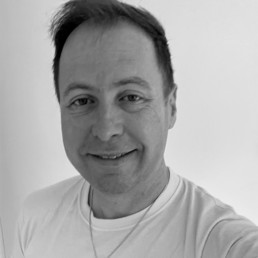
Written by Troy Jenkinson
Equality, Diversity & Inclusion Specialist, children’s author, public speaker and former Primary Headteacher and Executive Headteacher. https://troyjenkinson.com/
Today, more than ever, we should strive for equality in our schools. Seeing how LGBTQ+ culture has been embraced in colourful Pride events and the peppering of queer characters in the media, you could be forgiven for thinking we had turned a corner in equality. We have come a long way, triumphing over the Section 28 policy (the 1988 amendment to the UK Educational Bill silencing queer teachers) and the partial decriminalisation of homosexuality. We have fought hard for rights to marry, adopt and live our lives showing our “True Colors” to quote Cyndi Lauper.
Digging deeper, you realise how far we still need to go. The ILGA (2020) reports 70 countries still criminalise homosexuality; 6 punishable by death, 57 with lengthy prison sentences. Only 68 countries offer broad protection for their LGBTQ+ population. High profile media events point to continued educational need. Florida’s “Don’t Say Gay” Bill (March 2022) mirror’s Thatcher’s vindictive 1988 Section 28. We have not learned. Cripplingly unfair acts such as harsh laws to imprison LGBTQ+ people for life in Uganda reported by the BBC in March 2023 marginalise our community.
The UK once topped the ILGA table of European countries for LGBTQ rights (2015), but slumped 14 places by 2022, accredited to governmental failures and its abandonment of its promise on gender recognition and equality plans. The statistics speak for themselves. Galop (2021) reported “LGBT+ hate crime is disproportionately on the rise in the UK.” Two thirds of LGBTQ+ people experienced homophobic violence or abuse. This likelihood only increases for ethnic minority and trans people.
The question we have to ask ourselves is; why?
Bullying is borne from ignorance. Section 28 has long-lasting effects on our educational establishments. Stonewall reports LGBTQ+ students are twice as likely to have been bullied than their non-queer compatriots (42% compared to 21%). Teachers echo this; 85% of secondary and 45% of primary staff acknowledge homophobic bullying in their schools.
With less than half of LGBTQ+ students (48%) experiencing positive messaging to support them, it is high time we as educationalists did something about it. The government introduced Relationships and Sex Education Guidance (2019) but left it open to interpretation stating:
“Schools should ensure that all of their teaching is sensitive and age appropriate in approach and content. At the point at which schools consider it appropriate to teach their pupils about LGBT, they should ensure that this content is fully integrated into their programmes of study for this area of the curriculum rather than delivered as a standalone unit or lesson. Schools are free to determine how they do this, and we expect all pupils to have been taught LGBT content at a timely point as part of this area of the curriculum.” (DfE, 2019)
Robert Long (2023), concludes schools are still not required to “promote” same-sex marriage:
“Governors, teachers and non-teaching staff in schools, parents and pupils, are free to hold their own religious or philosophical beliefs about marriage of same sex couples.” (Long, 2023)
Schools need help to sensitively support all pupils and tackle the endemic victimisation. They need to address inequality and inclusion in their curriculum and how they support diverse families. There is little guidance for parents themselves.
From my own experience of coming out, my parents found it traumatic; relating it to grieving as they tackled a myriad of questions, hyped by media negativity:
- Would I grow up happy and fulfilled?
- Would I be bullied?
- Would I die of a terrible disease?
- Would they have grandchildren?
Though this was in the 2000s, it is still a very real issue for some individuals today.
Recently, I worked with international colleges supporting staff and students from countries with poor human rights for LGBTQ+ citizens. I became fascinated by the term “Straight Privilege.” Those not identifying as LGBTQ+ do not have to come out, or seek out role models in the public eye. It is an interesting concept to explore.
As a headteacher, influenced by Andrew Moffatt, I introduced weekly “No Outsiders Assemblies.” Using news images, I positively identified people who stood up for their rights or succeeded despite potential marginalisation. This ranged from Malorie Blackman’s interpretation of historical figure, Rosa Parks for Doctor Who and Jacinda Ardern’s maternity arrangements as New Zealand’s Prime Minister, to discussing the controversies of a gay kiss at the 2018 Winter Olympics.
Working with a family whose children experienced bullying for having same sex parents, inspired me to publish my first children’s book “The Best Mummy Snails in the Whole Wide World.” Since, I have delivered countless assemblies, workshops and key notes speeches aimed at fighting the corner and being the role-model, I never had in school.
What Does it Mean to Belong?
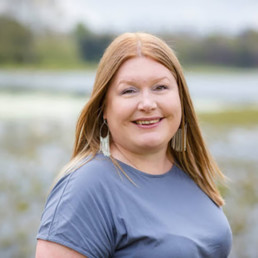
Written by Hannah Wilson
Founder of Diverse Educators
Some people think that framing DEI work under belonging softens it and dilutes it, whilst I do understand this critique, I personally believe that belonging is the door-opener to the conversations about DEI, it is the way-in for many to enter the space.
Belonging to me is being seen, being heard, being valued, being safe. Belonging is not about fitting in but about being accepted, loved and respected for who we are. When we belong, we feel included, we feel connected and we can flourish as we can be ourselves without fear of judgment. We belong when noone makes us feel like an outsider, noone others us. We belong when we are celebrated, not tolerated.
I always start my training session with any stakeholder group by exploring the language and unpacking the acronyms that can inhibit the work. I share the linguistic/ acronym journey of DI (Diversity and Inclusion) becoming EDI (Equality, Diversity and Inclusion) and iterating into DEI (Diversity, Equity and Inclusion). With the J for Social Justice appearing with some saying DEIJ and others saying JEDI. Noticeably, the addition of the B has been a more recent trend in the last 3 years.
Belonging appeared in our consciousness and in our vocabulary in the wake of George Floyd’s murder. As we saw corporate commitments to doing the work, I observed a trend on LinkedIn. People in my network who were Heads of DI/ EDI/ DEI were becoming Heads of Belonging. A subtle shift in language which reframed their role. Their remit was to be responsible for levels of belonging in their organisation and to use this lens to scrutinise policies, processes and practices.
I started sharing this observation with the school people I was training and it always resonated – show me an educator who would answer No to the question: Do you want all of your learners to belong in your classroom/ school? In some ways it is a bit of a trick question when you then follow up with more probing questions about belonging in the curriculum and in the library. They have already said Yes so how do they now do a U-turn and say No?
I began to extend the questioning to the adult experience: Which adults belong in your school? Which parents belong in your playground? Who belongs in our education system? Each question was a provocation to invite some reflection and discussion, to shift people out of their own bubbles and to exercise some awareness and some empathy for others.
Using my coaching skills to create a safe space, to take people beyond their comfort levels and to increase their consciousness is a facilitation strategy I am constantly refining. A safe space means that we can be courageous and that we can challenge one another but that we do it in a mindful way. The wheel of power of privilege exercise I regularly use is a tool that can create high levels of discomfort but it is a great way to unpack the ‘perception gap’ and emphasise why some people might have a greater sense of belonging than others.
Linking the census data for the country to the workforce census for our profession to attrition data for the sector to hate crime data in society to staff and student survey data, is another way to increase awareness of who belongs and why this might be. As an English teacher I use the data to tell the story of a space and I ask the question: What story is the data telling us about who belongs here?
So when I am delivering keynotes and workshops on Creating a Culture of Belonging, with the acute awareness that I am a cis-het, white, able-bodied woman who is facilitating the conversation, I am not letting people off of the hook, but I am instead creating a container for some radical candor. I am holding up the mirror to myself and to others to recognise that we might have taken our own sense of belonging for granted and that we might assume that others feel/ experience our spaces in the same way as we do, when the reality is that there are gaps which can quickly become gulfs.
I remind people in our training sessions that belonging and love are at the centre of Maslow’s hierarchy of needs. Noone can progress to the upper tiers of esteem or self-actualisation without a sense of connection. More importantly it is also a reminder that we do not belong if our physiological and safety needs are not being met. A stark example of this is found in the Just Like Us 2021 Report – Growing Up LGBTQ+ published as we came out of lockdown.
Belonging is the goal of our DEI work. Belonging is also the outcome of our DEI work. Belonging surveys can be helpful as they baseline how people are currently feeling about their experience – we can baseline and benchmark belonging by role, by group, by identity and listen to/ learn from what we are being told. Belonging is not fluffy, when used intentionally, it instead creates insight from the different portals it opens up for us to explore.
For example, women between 30-39 who are parents/ carers and who are seeking flexible working vote with their feet and leave our sector in droves each year. How can we create more family-friendly schools to create a greater sense of belonging for that group of professionals?
For example, mixed race is the fasting growing racial identity in primary school pupils nationally. How can we recruit and retain more teachers of colour who represent the communities that we serve? How does having increased role models in the staff increase the levels of belonging for our pupils?
A culture of belonging is one where we are courageous and curious, one where we are open to challenge and committed to change. It is one where we ask searching questions and where we listen to the often hard truths that are revealed.
So as everyone jumps on the ‘Belonging Bandwagon’ and it becomes the newest buzz word at edu-events, can we make sure we are not skirting around DEI issues but getting to the heart of the matter? And when we are talking about belonging at events and in our schools can we be more aware of who is in the room, of who is talking, of who is listening and what that also tells us about the sense of belonging or the lack of?
Indigenous Knowledge is Integral to Diversifying the Curriculum
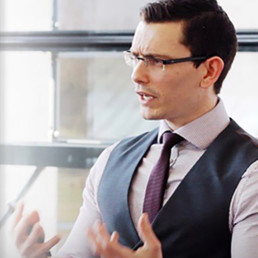
Written by Rob Power
Dr Rob Power is an award-winning teacher, educational consultant and cultural historian specialising in global history and indigenous knowledge. Before returning to academia as a lecturer at the London School of Economics and Political Science in 2018, and more recently as founder of Powerful Histories, Rob was Head of History and Politics at a leading independent school in Oxfordshire.
Indigenous Knowledge should be central to curriculum diversity initiatives
On 13th September 2007, the General Assembly of the United Nations adopted The Declaration of the Rights of Indigenous Peoples. Enshrined in the document was a commitment to uphold standards for the survival, dignity and well-being of the Indigenous peoples of the world.
In recent years, there has been a growing recognition of the importance of incorporating indigenous knowledge into education. Indigenous knowledge refers to the unique knowledge, traditions, practices, and beliefs of indigenous communities. It is knowledge that has been passed down from generation to generation and encompasses ways of knowing, being, and doing that are rooted in a deep understanding of the natural world and the relationship between humans and the environment.
As schools throughout the world begin to consider ways in which to develop sustainable practices, the prioritisation of connection to our living environment occupies centre stage. It is in this context that Indigenous knowledge can be particularly impactful. Inclusion of non-appropriated Indigenous knowledge into our teaching – on issues such as the environment, community, climate, medicine, economics and science – isn’t just about creating a culturally relevant and culturally responsive curricula. It can also help to create a more equitable and inclusive learning environment that recognises and values diversity within our own communities.
The community-based approach to problem-solving that lies at the core of Indigenous knowledge systems should have a place in every school. Whilst honouring the robust and deep knowledge held by Indigenous communities, we help our learners to bridge divisions between cultures and constructed knowledge hierarchies and develop a holistic understanding of history, culture and the natural world. It can be a powerful tool for promoting social justice, encouraging pupils to critically reflect on the effects of forced assimilation, cultural genocide, and ongoing social and economic marginalisation of indigenous peoples.
Indigenous Knowledge in the Curriculum
Incorporating Indigenous knowledge into our teaching should go beyond rudimentary case studies. Prioritising the voices and experiences of indigenous peoples and communities, involving indigenous community members in design of curriculum and assessment materials, and utilising knowledge acquisition pathways of the communities we are studying is essential. Prioritising Indigenous knowledge thus not only affords an opportunity to diversify our curriculum, but to globalise our teaching.
Valuing, respecting, and integrating Indigenous knowledge into the curriculum involves developing an understanding of knowledge and knowledge acquisition within Indigenous communities. Oral tradition, ceremony, connection with the natural world and spiritual practice are integral to the continuation of Indigenous ways of being and convey deep meanings and concepts that are not easily translatable in Western codes of learning. It can thus be helpful to focus on four principal pedagogical approaches when teaching Indigenous stories and experiences: land-based teaching, storytelling, performance-based teaching and experiential teaching. The incorporation of Indigenous languages can also be beneficial.
When incorporating Indigenous knowledge into your curriculum, it is important that that knowledge takes centre stage. This means refraining from treating the study of Indigenous communities as case studies and instead placing those communities – and their ‘ways of knowing’ – as the lens through which we learn. Not only does this create an opportunity to truly globalise our pedagogy, but so too it affords space for interdisciplinary learning. Let us say, for instance, that rather than teaching the topic of ecology or biodiversity through a Geography or Biology curriculum, we instead delivered a series of lessons focusing on the semi-nomadic Chahdegal Balouch peoples in Iran. A focus on the community would not only allow the study syllabus-specific content – on environmental management, land distribution, sustainability and migration, for example – but would open opportunities to consider the interconnectedness of socio-cultural values and the living world. This is of course an isolated example, but think of the possibilities that a curriculum centred on Indigenous knowledge could offer.
Global Teaching in Practice:
Incorporating indigenous knowledge into the classroom is an essential step towards providing a more inclusive, diverse education. It is about reimagining what education means and looks like, developing an approach where knowledge hierarchies are deconstructed, disciplinary barriers are challenged and all communities are valued and respected. Collaborating with those communities is essential, not only in providing a culturally relevant education for pupils, but also as a means to develop culturally sustaining pedagogies that frame diversity in a truly global context.
My work with schools through the Global Teaching Project primarily involves supporting teachers to recognise the importance of Indigenous knowledge and de-centring dominant narratives responsible for the creation of exclusionary barriers. In a recent project at a school in West London, teachers came together to transform a Year 8 module on ‘The Americas Before Europe’. Together, they worked to challenge dominant Western narratives presenting Indigenous American communities as homogenous, passive, and situated within the past. Drawing on newly-made connections and interviews with Indigenous American artists and community leaders, teachers centred the perspectives of indigenous voices. Pupils responded by curating a virtual exhibition which celebrated the stories and experiences of Indigenous communities. This was not co-option of community knowledge but a conversation between learner and community members.
The Global Teaching Project, and its focus on Indigenous knowledge and global pedagogies, forms an important part of ongoing learning and self-reflection about issues of power and privilege. More work is sorely needed in this regard, not only in critical reflection of what our pupils learn, but also in consideration of the impact that diversifying a curriculum through content change alone can have in the long term.

